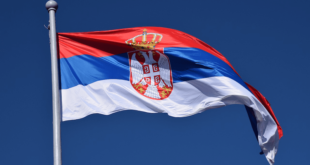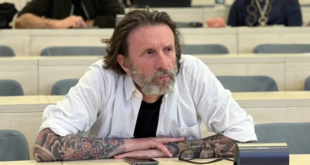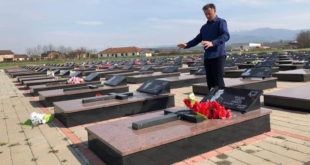Records held by the International Criminal Tribunal for the Former Yugoslavia show how paramilitary units were set up and deployed to use violence to achieve political aims in the 1990s wars.
It has been three-and-a-half years since the International Criminal Tribunal for the former Yugoslavia, ICTY in The Hague closed, and the successor institution, the International Residual Mechanism for Criminal Tribunals is now finalising its last trial.
The case against Jovica Stanisic and Franko Simatovic, both former Serbian State Security officials, whose first-instance verdict will be handed down on June 30, deals extensively with the role of Serbian paramilitaries in the break-up of Yugoslavia.
Other trials, throughout the two decades of the ICTY’s operations, probed how these units were set up, who commanded, trained and funded them, and what were the patterns of their violent engagement.
While much has been already uncovered by academic and journalistic research, differences between various units and patterns of paramilitary violence at the local level – from Vukovar in Croatia, to Sanski Most, Kljuc, Doboj, Bosanski Samac, Visegrad and Zvornik in Bosnia and Herzegovina, to Podujevo/Podujeva or Cuska/Qyshk in Kosovo – remain unclear. Beyond Arkan’s Tigers and the Scorpions, whose actions are more widely known, the perpetration of violence by others is still opaque.
The extensive records, and millions of pages of transcripts, witness statements and other documents from trials held in The Hague can help explain the similarities and differences between victimisation by paramilitary units, of innocent civilians in these towns and villages.
What happened in two Bosnian towns, Bosanski Samac and Visegrad, shows that paramilitary units supporting the Bosnian Serbs in pursuit of their political goals were different from one another, and perpetrated different kinds of violence.
The research this article is based on was conducted over a period of four years, as part of a larger project funded by the Dutch Research Council about Serbian paramilitaries during the break-up of Yugoslavia.
It involved analysing a number of ICTY cases, ranging from those involving political leaders like Slobodan Milosevic, Goran Hadzic, Milan Babic and Radovan Karadzic, military commanders like Ratko Mladic, police officials such as Mico Stanisic and Stojan Zupljanin and paramilitary leaders like Milan Lukic. As a work of historical analysis, its findings were based on the evidence material, and not judicial proclamations of guilt.
Open and covert paramilitary violence
Bosanski Samac and Visegrad are two examples of the vastly different ways in which violence was perpetrated by various paramilitary units. The violence in Samac was different than in Visegrad – the latter was perpetrated in public, often in broad daylight and in open, public spaces, and done by men whom the victims often personally knew.
In Samac, the violence was more hidden from public view, and often perpetrated by men who were not locals. The takeover of both towns took place in the spring of 1992, in the early days of the Bosnian Serb armed scramble for territory, and non-Serb residents were subjected to arbitrary arrests and detention, beatings, sexual abuse and humiliation. Many were killed, and had their property looted.
In Samac, like elsewhere in Bosnia and Herzegovina, paramilitaries were just one violent actor perpetrating violence against civilians. Much of the violence there took place in the police station building and around it, the local school and gym, as well as the village of Crkvina, where 16 detainees were killed in early May 1992.
One survivor of the violence in Samac who testified in a number of ICTY trials was former Bosniak politician Sulejman Tihic. He was arrested, beaten and abused at the police station in the town and in other locations such as Sremska Mitrovica in Serbia.
According to Tihic’s testimony in the Stanisic and Simatovic case, the men who entered the town and captured the municipal and police station buildings were “masters of life and death” in Samac.
Tihic stated that “one could see that these were people who knew how to wage war, who knew how to handle weapons, as opposed to the locals, who carried weapons as if they were wooden beams, or sticks”. Simply, “you could see that these other people were professionals, warriors, who knew their business”.
Violence experienced by civilians in Visegrad was particularly brutal and public. Well-known incidents like the two fires in June 1992, at Pionirska Street and Bikavac, resulted in the deaths of around 120 civilians, many of them children. Those killings were perpetrated by Milan Lukic and his men who called themselves the Avengers.
Milan, and his cousin Sredoje, are arguably some of the most well-known paramilitary perpetrators ever prosecuted in The Hague. While not charged specifically in the Lukic case at the ICTY, widespread rape and sexual abuse of women and girls, as well as abductions of civilians in the Sjeverin and Strpci cases are also connected to this paramilitary group.
In mid-June 1992, the first fire was set in the house owned by Adem Omeragic on Pionirska street. The people who were killed were civilians fleeing the violence from the nearby Koritnik village, and before they were killed they were robbed, threatened and abused.
The same pattern was repeated two weeks later in the Bikavac area of Visegrad, in the house of Meho Aljic. Witness VG-58, whose identity was protected by the use of the pseudonym, remembered hearing something “like the screams of cats”. It was terrible, the witness recalled in court.
The only person who survived the second fire was Zehra Turjacanin, whose harrowing testimony in the Lukic trial provided crucial insights into the brutal crime. She recalled the house appearing to be prepared in advance for burning the civilians alive. Those civilians included her family members.
Turjacanin was badly burned as she fled, and in the ICTY records there is ample evidence of her injuries, including a video made not long after, when her wounds and pain are easy to see.
In 2009 judge Patrick Robinson, when reading the Trial Chamber judgment sentencing Milan Lukic to life imprisonment, and Sredoje Lukic to thirty years, stated: “In the all too long, sad and wretched history of man’s inhumanity to man, the Pionirska street and Bikavac fires must rank high”.
A larger pattern of persecution
Evidence presented in trials unambiguously shows that paramilitary activity was part of a larger pattern of persecution of non-Serbs in an effort to achieve an ethnically homogeneous state. Paramilitary violence went hand in hand with the expulsion, the camps, and the abuse and targeting of non-Serb civilians by the Bosnian Serb military and police.
Who exactly was behind all these different paramilitary units acting in Bosnia and Herzegovina on behalf of the Bosnian Serbs was discussed in detail in numerous trials, from Serbian and then Yugoslav President Slobodan Milosevic to Bosnian Serb officials Momcilo Krajisnik, Mico Stanisic and Stojan Zupljanin; to Radovan Karadzic, Jovica Stanisic and Franko Simatovic.
Due to the death of the accused, the Milosevic trial ended without a judgment, while many Bosnian Serb officials were convicted, and some – like Karadzic and Mladic – sentenced to life imprisonment. Jovica Stanisic and Franko Simatovic will hear the trial judgment on June 30 2021. This case in particular, which was heard again after it was sent to retrial for complicated legal reasons, focuses on the ties between the regime in Serbia and the units in the field. By the time it finalises the appeal process, the case will have run for close to two decades.
In these criminal trials, the public had the opportunity to hear prosecution and defense witnesses, survivors of paramilitary violence, eyewitnesses, insider witnesses such as former paramilitary members or state officials, various experts analysing the military, police, demographic, and forensic aspects of each case.
While much of this evidence remains classified and inaccessible to the public, especially in the Jovica Stanisic and Franko Simatovic case, this vast documentation does provide important opportunities to ask and answer questions about the nature and purpose of paramilitary violence in the 1990s.
What the ICTY’s records reveal is that paramilitaries active in the violent breakup of Yugoslavia were not all the same. Vast differences originated in how the units were set up, by whom and for which purpose, who the members and commanders were, how the units were trained and deployed, and where and how they engaged. While it is tempting to treat them all the same, an informed, historical view demands much more nuance.
After all, the evidence suggests, units attacking Bosanski Samac were not locals, and they were younger, more capable, and led by men with connections in high places, including intelligence agencies.
They were mobile, moving through towns and villages in order to capture them, setting themselves up in police stations where they would beat, and kill, largely away from public view. They targeted mostly men, and they perpetrated violence to fulfil a goal – to control territory.
The Avengers, on the other hand, terrorised the residents of Visegrad in broad daylight, roaming around town in stolen cars, music blasting, looking for people to torment and kill. For these perpetrators, men, women and children were all equally desirable victims.
As locals, they knew who they were victimising intimately, and they seem to have enjoyed it. These kinds of groups attracted disgruntled men who used the breakdown of the rule of law to act out violent resentments against neighbors.
All of these units inflicted damage – they murdered individuals, broke apart families, and destroyed lives. How they did that reveals that unit affiliation, structure and membership were important in determining the kind of violence that they ended up perpetrating.
 Eurasia Press & News
Eurasia Press & News



